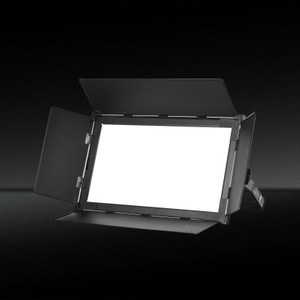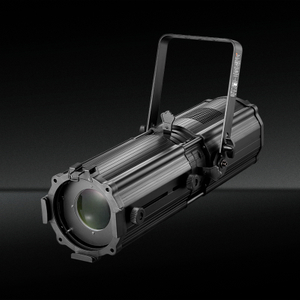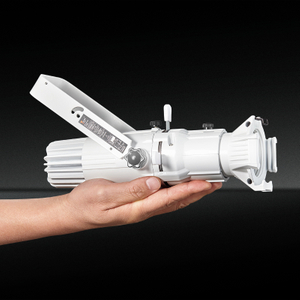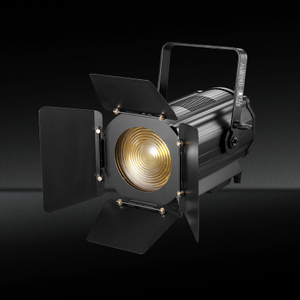Which LED light is easiest on the eyes?
Views: 2 Author: Site Editor Publish Time: 2025-06-17 Origin: Site








LED lighting has revolutionized the way we light our homes and offices. With their energy efficiency and long lifespan, LED lights have quickly replaced traditional incandescent and fluorescent bulbs. However, as more people spend long hours in front of screens and under artificial lighting, the comfort of the lighting becomes a concern. One question that often arises is: Which LED light is easiest on the eyes?
In this article, we’ll explore the different types of LED lights, factors that affect visual comfort, and provide recommendations on choosing the right LED lighting for your eyes. We will also answer frequently asked questions (FAQs) related to LED Soft Light and how it can improve your eye health.
The Importance of Choosing the Right LED Light
LED lights have become a popular choice for both home and office spaces, offering numerous benefits such as:
Energy Efficiency: LED lights use significantly less energy than traditional incandescent bulbs, leading to lower electricity bills.
Longevity: LEDs last much longer than other types of lighting, with many lasting up to 25,000 hours or more.
Environmentally Friendly: Unlike incandescent and fluorescent bulbs, LEDs contain no harmful mercury, making them more eco-friendly.
However, despite these advantages, not all LED lights are created equal when it comes to comfort. The brightness, color temperature, and design of the LED light can impact how comfortable it is to use for prolonged periods.
How LED Lights Affect Your Eyes
LED lights are often touted as an improvement over older forms of lighting, but they also have some potential drawbacks that may impact eye health. Some of the common issues related to LED lighting include:
Blue Light Emission: Many LEDs, particularly cool white LEDs, emit blue light. Blue light has been linked to eye strain, disrupted sleep patterns, and potential damage to retinal cells over prolonged exposure.
Glare: Some LED lights are too bright or direct, causing glare that can make it difficult to see clearly, resulting in eye fatigue and discomfort.
Flicker: Some LED lights may flicker at a frequency that is not noticeable to the human eye but can still cause discomfort, headaches, and eye strain.
Types of LED Lights and Their Impact on Eyes
When it comes to LED Soft Light, there are several factors to consider:
1. Color Temperature
Color temperature is one of the most important factors when choosing an LED light that is easy on the eyes. LED lights come in various color temperatures, measured in Kelvins (K). The three main categories are:
Warm White (2700K to 3000K): These lights are yellowish and resemble the light of traditional incandescent bulbs. They tend to be the easiest on the eyes and provide a cozy, relaxing ambiance.
Neutral White (3500K to 4100K): These lights are whiter but still warm, making them suitable for workspaces where clarity is important without causing strain.
Cool White (5000K to 6500K): These lights emit a bluish, daylight-like light. While they are bright and energizing, they can also cause more eye strain and discomfort, particularly in low-light environments.
2. LED Soft Light
LED Soft Light refers to the diffused light produced by LEDs that is gentle on the eyes. Unlike harsh, direct lighting, soft light reduces glare and distributes the light more evenly across a room, creating a more comfortable lighting experience. This makes LED Soft Light ideal for areas where you spend a lot of time, such as your bedroom, living room, or office.
3. Flicker-Free LED Lights
Flickering is a common problem with LED lights, especially those with poor quality drivers. Flickering can lead to eye strain, headaches, and fatigue. To avoid this, opt for flicker-free LED lights, which provide a stable light output without visible flicker. These are designed to reduce eye strain and are particularly useful for tasks that require focus, such as reading or working on a computer.
4. Dimmable LED Lights
Dimmable LED lights give you control over the brightness, allowing you to adjust the light intensity according to your needs. This feature can help reduce eye strain by enabling you to set the perfect lighting for different tasks. Dimming the lights in the evening can also help promote better sleep by reducing exposure to blue light before bedtime.
Key Features to Look for in Eye-Friendly LED Lights
To choose the best LED Soft Light for your eyes, consider the following features:
Low Blue Light Emission: Some LED lights are specifically designed to emit less blue light. These lights are easier on the eyes and can be beneficial for individuals who experience eye strain from prolonged screen use.
High CRI (Color Rendering Index): The CRI measures how accurately an LED light displays colors compared to natural daylight. A higher CRI means the colors will appear more natural, which can reduce visual discomfort.
Diffused Lighting: LED lights with a diffused cover or soft focus lens reduce glare and provide more uniform illumination, making them less harsh on the eyes.
Anti-Flicker Technology: Look for LED lights that feature anti-flicker technology to ensure a smooth and consistent light output. This can help prevent headaches and eye fatigue caused by flickering lights.
The Best LED Light Options for Eye Comfort
Based on the factors discussed, here are some top recommendations for LED Soft Light options that are easiest on the eyes:
Philips Hue White and Color Ambiance LED Bulbs
These bulbs allow you to adjust the brightness and color temperature from warm to cool, helping you customize your lighting for maximum comfort. They also have low blue light emission, making them ideal for sensitive eyes.
Cree LED Bulbs with Soft White Light
Cree offers LED bulbs with a soft white light that closely mimics traditional incandescent bulbs. These are perfect for creating a relaxing ambiance without causing eye strain.
LIFX LED Bulbs with Dimmable Features
LIFX bulbs provide adjustable brightness and color temperatures, and they come with flicker-free technology. They also have a high CRI rating, making them ideal for spaces where color accuracy is important.
Yeelight Smart LED Bulbs
Known for their energy efficiency, Yeelight bulbs also feature soft light modes that reduce blue light exposure, making them a great choice for bedroom lighting.
Brightech Soft LED Floor Lamp
This floor lamp provides a soft and warm light that is gentle on the eyes. It features dimming capabilities and is perfect for reading or other close-up tasks.
FAQs
What is the difference between LED Soft Light and regular LED light?
LED Soft Light is a type of LED lighting that diffuses the light more evenly, reducing glare and harsh shadows. It creates a gentle, comfortable lighting environment that is easier on the eyes. Regular LED lights, on the other hand, may be more focused and intense, which can cause eye strain over time.
How does blue light from LEDs affect your eyes?
Blue light from LEDs, especially cool white LEDs, can contribute to eye strain, fatigue, and disruption of sleep patterns. Prolonged exposure to blue light may also increase the risk of retinal damage over time, although more research is needed in this area.
Can dimmable LED lights help reduce eye strain?
Yes, dimmable LED lights allow you to adjust the light intensity to suit your needs. Lower brightness in the evening can reduce eye strain and help prevent sleep disturbances caused by bright, blue light.
Are LED lights better for your eyes than fluorescent lights?
Yes, in general, LED lights are considered better for eye health compared to fluorescent lights. Fluorescent lights often flicker, which can cause eye strain and headaches. LED lights, especially those with anti-flicker technology, provide a more stable and comfortable light output.
How can I reduce eye strain when using LED lights?
To reduce eye strain, choose LED Soft Light with low blue light emission and adjustable brightness. Ensure that your lighting is not too bright, and try to use diffused lighting to reduce glare. Take regular breaks when using screens and consider using a blue light filter on your devices.
Conclusion
Choosing the right LED light can make a significant difference in your comfort and eye health. LED Soft Light is the ideal choice for those looking for lighting that is easy on the eyes. By considering factors such as color temperature, blue light emission, flicker-free technology, and dimming capabilities, you can create a lighting environment that reduces eye strain and enhances your overall well-being.






